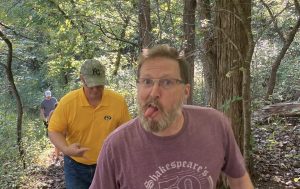
Oct. 24, 2025
Mizzou scholars spearhead multidisciplinary research on team dynamics, knowledge exchange
Here’s light-hearted take on a real doctoral retreat and how it might look as an article in a completely fictitious academic journal.
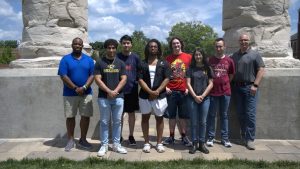
Aug. 14, 2025
Undergrads gain hands-on experience in materials innovation
Summer research experience provided participants with opportunities to make a real-world impact.
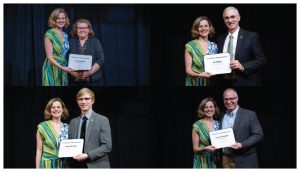
March 17, 2025
Mizzou Engineering honors outstanding faculty, staff, students and alumni
Mizzou Engineering recognized outstanding faculty, staff, students and alumni for their accomplishments and contributions as part of its 2025 awards banquet.
![The multidisciplinary team consists of faculty from Mechanical Engineering (Matt Maschmann), Chemical and Biomedical Engineering (Matthias Young, Sheila Grant and David Grant) and Electrical Engineering and Computer Science (Jianlin Cheng [not pictured], James Keller, Filiz Bunyak and Prasad Calyam).](https://engineering.missouri.edu/wp-content/uploads/2024/11/DSC_4763-300x200.jpg)
Nov. 13, 2024
Accelerating materials discovery
Mizzou Engineers are partnering with Arizona State University, Brewer Science and the U.S. Army Corps of Engineers Engineer Research and Development Center (ERDC), to increase the efficiency of materials development by using artificial intelligence (AI) and machine learning (ML) to model and test new materials. Mizzou's research is supported by a $1.87 million grant, sponsored by Arizona State University.
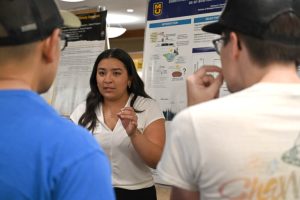
July 29, 2024
Engineering Undergrads Shine at Summer Research Forum
At the University of Missouri, researchers are blazing new trails for more than just themselves—and that innovative spirit extends to student researchers. Undergraduate engineering students presented their summer research findings at the Office of Undergraduate Research’s Summer Undergraduate Research Forum.
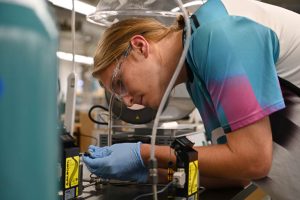
July 24, 2024
Mizzou Engineering hosts four NSF REU sites in critical research areas
Mizzou Engineering empowers students to explore the world through leading-edge research and provides the necessary tools and guidance. This summer, students from across the U.S. have traveled to campus to take part in National Science Foundation Research Experiences for Undergraduates Sites (NSF REUs) and gain access to those tools while working with our world-class faculty.
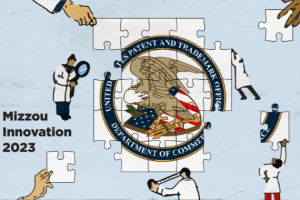
July 16, 2024
The patent puzzle
Mizzou researchers work with the Office of Technology Advancement to protect and promote their discoveries.
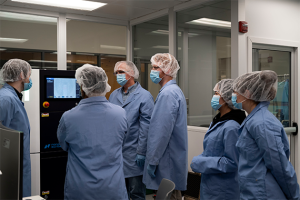
Jan. 9, 2024
Mizzou Engineering secures Nanoscribe Quantum X Shape 3D printer
Purchased with nearly $1 million from a U.S. Army Engineer Research and Development Center (ERDC) grant, the Quantum X shape from Nanoscribe, a Bico company, uses a process called two-photon lithography to rapidly cure a liquid resin, making it ideal for rapid prototyping and wafer-scale processing of any 3D shape. It’s the fastest and most accurate 3D printer for high-end microfabrication tasks on the market. Mizzou Engineering is one of just a few U.S. organizations to have the printer in and one of fewer than 100 around the world.
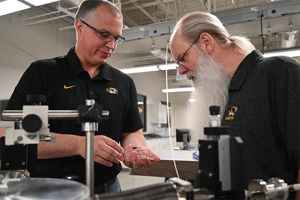
Aug. 23, 2023
NSF Research Traineeship program to prepare materials and data scientists
A five-year, $3 million grant from the National Science Foundation (NSF) is establishing a doctoral training program at the University of Missouri to help prepare the next generation of scientists and engineers to work in the emerging fields of materials science and data science and analytics.
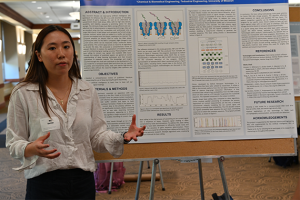
Aug. 1, 2023
REU: Undergraduates explore materials science across engineering disciplines
Students participating in a materials science-focused summer program have spent nine weeks at Mizzou Engineering getting hands on research experience.